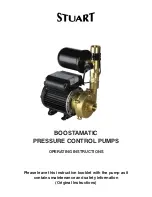
GB
- 31 -
The speci
fi
ed vibration value can be used for initi-
al assessment of a harmful e
ff
ect.
Keep the noise emissions and vibrations to a
minimum.
•
Only use appliances which are in perfect wor-
king order.
•
Service and clean the appliance regularly.
•
Adapt your working style to suit the appliance.
•
Do not overload the appliance.
•
Have the appliance serviced whenever ne-
cessary.
•
Switch the appliance off when it is not in use.
•
Wear protective gloves.
Residual risks
Even if you use this electric power tool in
accordance with instructions, certain resi-
dual risks cannot be rules out. The following
hazards may arise in connection with the
equipment’s construction and layout:
1. Lung damage if no suitable protective dust
mask is used.
2. Damage to hearing if no suitable ear protec-
tion is used.
3. Health damage caused by hand-arm vib-
rations if the equipment is used over a pro-
longed period or is not properly guided and
maintained.
5. Before starting the equipment
Before you connect the equipment to the mains
supply make sure that the data on the rating plate
are identical to the mains data.
Always pull the power plug before making
adjustments to the equipment.
All covers and safety devices have to be properly
fi
tted before the machine is switched on.
5.1 Extraction port assembly (Fig. 2/Item 1)
Important. For health and safety reasons it
is imperative that you use a dust extractor.
•
Connect your router to the extraction port (1)
of a vacuum cleaner or a dust extraction de-
vice. This will provide excellent dust extraction
on the workpiece. The benefits are that you
will protect both the equipment and your own
health. Your work area will also be cleaner
and safer.
•
Dust created when working may be dange-
rous. Refer to the section entitled “Safety inst-
ructions”.
•
The vacuum cleaner you use for the extrac-
tion work must be suitable for the workpiece
material. Use a special vacuum cleaner if you
are handling harmful materials.
•
Secure the extraction port (1) to the routing
shoe (2) using the two countersunk screws
(f).
•
The extraction port can be connected to ext-
ractor units (vacuum cleaners) with a suction
hose.
•
The internal diameter of the suction port is 35
mm. Now fit a suction hose of the appropriate
size to the suction port.
5.2 Safety guard port assembly
(Fig. 3/Item 24)
Fit the safety guard (24) as shown in Fig. 3.
5.3 Parallel stop assembly (Fig. 4/Item 21)
•
Push the guide shafts (a) of the parallel stop
(21) into the holes (b) on the routing shoe (2).
•
Set the parallel stop (21) to the required di-
mension and secure it in place with the wing
screws (3).
5.4 Fitting the compass point (Fig. 5)
•
You can route circular areas using the com-
pass point (13) and the mounting to go with it.
•
Clamp the compass point (13) to the end of
one of the guide rods (a). Push the guide rod
(a) into a hole (b) on the routing shoe (2). Se-
cure the guide rod (a) on the routing shoe (2)
using the securing screws (3).
•
Set the required radius between the compass
point (13) and cutter.
•
Position the compass point (13) in the center
of the circle you wish to route. If necessary
undo the wing screw (c) on the compass
point (13) and extend/shorten the part of the
compass point (13) that points downwards.
5.5 Guide sleeve assembly (Fig. 6-7/Item 20)
•
Secure the guide sleeve (20) to the routing
shoe (2) using the two countersunk screws
(f).
•
The guide sleeve (20) is guided along the
template (c) using the guide ring (b).
•
The workpiece (d) must be larger by the diffe-
rence of “external edge of guide ring” and “ex-
ternal edge of router” (e) to obtain a precise
copy.
Anl_SA_Anl_TC_RO_1155_E_SPK8.indb 31
Anl_SA_Anl_TC_RO_1155_E_SPK8.indb 31
25.05.2018 09:23:02
25.05.2018 09:23:02
















































